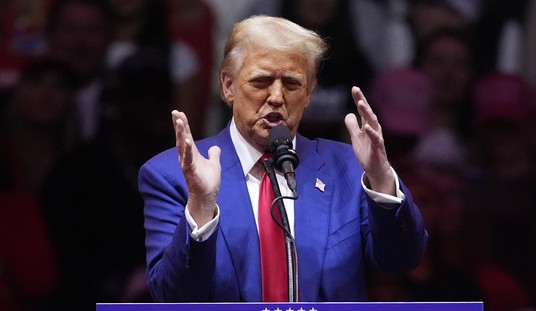“This is what democracy looks like!”
That’s a popular protest chant among liberals. It could be heard at many “Occupy” gatherings. It’s a staple at union-backed protests.
We all know that in a democracy, sometimes things go your way, and sometimes they don’t. The big question is, how will you react?
For example, many conservatives were disappointed by the results of last month’s elections. Despite high unemployment, sluggish economic growth and an unpopular health care program, a majority of voters returned a staunchly liberal president to office.
But just as there are no permanent victories, there are no permanent defeats. The only sensible option in a democratic society is to make corrections and keep trying.
Recommended
See, for example, Sen. Marco Rubio and Rep. Paul Ryan at the Dec. 4 Jack Kemp Foundation Leadership Award Dinner. Both men are already finding ways to explain that a society based on opportunity is the best way to lift people out of poverty. The liberal welfare state, meanwhile, is all too often a trap, as New York Times columnist Nicholas Kristof recently admitted.
Contrast that approach with what some of our friends on the left are up to.
In a statewide election in Michigan last month, voters soundly defeated Proposal 2, a measure that would have made union collective bargaining a right and given collective bargaining agreements the force of law. Voters shot down the union-backed measure 57-43 percent.
This, too, is what democracy looks like.
Last week, the Michigan legislature, perhaps inspired by the vote, passed a bill to become the nation’s 24th right-to-work state. This simply means that workers will no longer be forced to join a union. They will still be free to do so, if they wish.
Gov. Rick Snyder signed the bill because, he says, he wants Michigan to remain competitive. When nearby Indiana became a right-to-work state earlier this year, businesses scrambled in to create jobs. “They’ve had 90 companies in the pipeline for economic development say this was a factor in deciding to look to come to Indiana,” Snyder said of that state’s right-to-work law at a news conference earlier this year, citing statistics from the Indiana Economic Development Corporation. “That’s thousands of jobs. We need more and better jobs in Michigan.”
Union leaders realized they couldn’t overcome the challenge legislatively, so they turned to threats. “We’re going to pass something that will undo 100 years of labor relations, and there will be blood,” warned Democratic state Rep. Douglas Geiss when it was obvious the vote would go against his side. “There will be repercussions!”
Geiss was harkening back to a 1937 incident in which Ford security employees beat up United Auto Workers organizers. But there’s no reason automakers would use violence this time. Pro-union supporters did, though.
Protesters tore down a tent filled with activists from the group Americans for Prosperity. A protester punched Fox News contributor Steven Crowder as he covered the protests, leaving him bloodied. State troopers in riot gear swept the area clear.
Meanwhile, many teachers abandoned their classrooms, forcing some schools to close while the teachers traveled to protest at the capital. But many Democratic state senators weren’t even there; they skipped out before the final vote that approved the right-to-work bill.
This is what democracy looks like?
Workers should be able to join a union. And they should be able to opt out if they don’t want to join the union.
Conservatives have been down before and come roaring back. After Barry Goldwater’s resounding defeat in 1964, for example, who would have envisioned a President Reagan? Those on the right just kept working to persuade the American people about the strength of their ideas. That’s what they’re doing now.
After the violent protests last year in Wisconsin and now Michigan, it’s past time for leaders of the union movement to vow to do the same thing. Or is it democracy only when things go your way?


